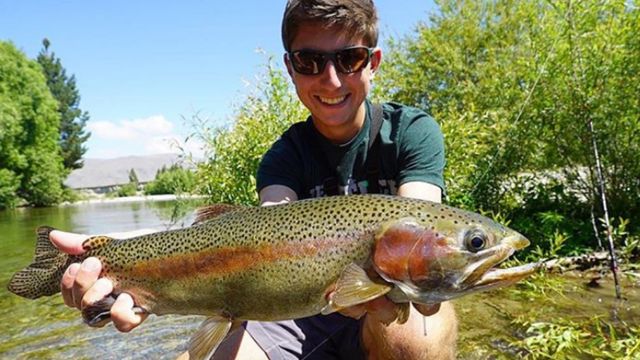
Why Inline Spinners Continually Crush Trout
Inline spinners are fishing catching machines, they've continually helped anglers catch trout, panfish, bass, pike and other many other species for decades. Fly fishing purists snub their noses at it, but to novices and spinning tackle anglers the inline spinner is a gem for catching trout.
During my early years of fishing at the trout parks in Missouri, my most productive lures for catching trout were a Rooster Tail, Flatfish Woolly Worm, and spinner. I must confess that I am now an avid marabou jig fisherman and rarely throw inline spinners for trout anymore, but I realize there are situations when it works better than my jig. I recall one particular trip to a trout park when a friend, who was a novice angler, kept catching trout after trout on an inline spinner while I struggled to get a bite on my jig.
Inline Spinners, It's All In The Blade
Inline spinners are great for catching trout mainly because the spinning blade on the lure’s shaft triggers strikes from both aggressive and inactive fish. The flash produced by the spinning blade mimics the movement of the shiny minnows trout feed on in rivers and lakes.
Which Weight To Go
The weight of inline spinners also provides a couple of advantages over other trout lures. The compact, heavier inline spinner can be cast longer distances and more accurately allowing you to place the lure in tight spots other anglers are unable to reach with lightweight flies. The heavier spinner also sinks faster so the lure can run deeper even in fast currents. Retrieving the inline spinner at a moderate to fast speed is the best way to present this lure to trout. You can retrieve the lure at a moderate pace when fishing the lure against the current because the current will provide enough push to make the blade spin fast enough to trigger strikes. If you are fishing the lure down current, you need a high-speed retrieve to make the blade spin fast enough to entice trout.
Keeping It Light With Inlines
My favorite sizes of spinners for trout are 1/32-ounce for the most finicky fish, 1/16-ounce for most situations and 1/8-ounce for fishing in fast current. I prefer inline spinners with gold or silver blades for fishing in clear water and white or chartreuse blades for stained or murky water.
Picking the right size line is crucial for inline spinners. I found 4-pound test monofilament was best for my inline spinner tactics. Hard-striking trout kept breaking my line when I used 2-pound test and I discovered heavier line prevented the blade from spinning properly.
Updated April 4th, 2022 at 5:29 AM CT
